Roshan Malik
Bahawalpur State (1833-1955) has a unique architecture blended with Italian style. It was comprised of three districts (Bahawalpur, Bahawalnagar and Rahim Yar Khan). The last ruler Nawab Sir Sadiq Muhammad Khan Abbasi V ruled the State (1907-55) before it merged into the unitary province of Pakistan. The State reached the zenith of its glory under his rule, as he transformed Bahawalpur into an excellence of learning and centre of architecture. Various schools, colleges, palaces, mosques, hospitals and a library and university were built during his time.
Since ATP readers have already been talking about Bahawalpur architecture through the Photo Quiz on Noor Mahal and then again on the Baghdad-ul-Jadeed Railway station, it makes sense to talk about this scope and history of this architectural heritage at greater length.
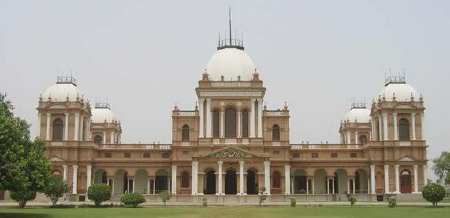
Sadiqgarh Palace (Sleeping Beauty Castle) is situated at Dera Nawab Sahib (Ahmedpur East), about 30 miles away from Bahawalpur, was the headquarters of the State.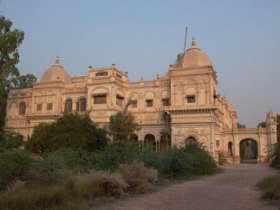 More than 1000 employees were deployed for the maintenance and beautification of the Palace and its lush green lawns. Nearly 100 rooms were decorated with crystal chandeliers, drapes, paintings and carpets.
More than 1000 employees were deployed for the maintenance and beautification of the Palace and its lush green lawns. Nearly 100 rooms were decorated with crystal chandeliers, drapes, paintings and carpets.
After Nawab’s death, the Palace had been sealed by the government for many decades due to a dispute among heirs. Many antiques had been stolen from the Sadiqgarh Palace and were sold in cities like Lahore, Karachi and Islamabad. The building of that glory now gives a deserted and shabby look surrounded by wild shrubs. The palace desperately needs maintenance and repair for the restoration of its grandeur.
Noor Mahal and Gulzar Mahal are the most elegant buildings in Bahawalpur built in the Italian style. Both the buildings are now under the control of Army. However, the army purchased the Noor Mahal some years back by paying Rs. 120 million to the heirs. It is unique in its architecture and is splendid with beautiful lawns and driveways.
 The late Nawab established various educational institutes in the State such as Islamia University Bahawalpur, Sadiq Public School Bahawalpur, Sadiq Egerton College Bahawalpur, Sadiq Dane High School Bahawalpur, Jamia Masjid al Sadiq Bahawalpur. The Central Library Bahawalpur is another landmark of Bahawalpur architecture which was built in 1924. This is the second largest library in Punjab having various manuscripts and rare books.
The late Nawab established various educational institutes in the State such as Islamia University Bahawalpur, Sadiq Public School Bahawalpur, Sadiq Egerton College Bahawalpur, Sadiq Dane High School Bahawalpur, Jamia Masjid al Sadiq Bahawalpur. The Central Library Bahawalpur is another landmark of Bahawalpur architecture which was built in 1924. This is the second largest library in Punjab having various manuscripts and rare books.
The famous Fort Derawar was once the capital of Bahawalpur State. It was built in thirteenth century by the Rajputs of Jaiselmer. The Nawabs of Bahawalpur conquered it in eighteenth century. It was a birth place of many Nawabs. The rulers of Bahawalpur give great importance to Derawar as their royal cemetery is near Derawar.
Derawar is about 65 miles away from Bahawalpur in Cholistan desert. The historic Derawar Fort, enormous and impressive structure in the heart of Cholistan desert, is rapidly crumbling and if the immediate preventative measures are not taken, the edifice will be destroyed and the historians, researchers and sightseers deprived of the view of the legacy of the bygone era.
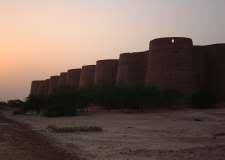
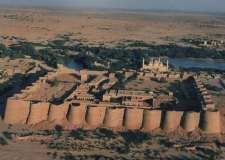
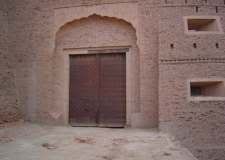
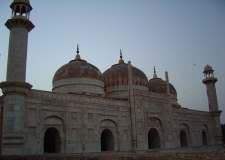
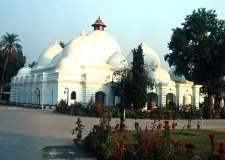

The legacy of Bahawalpur state has been in ruins like many other historical places of the country. These building have potential to attract a great deal of tourists. But what the heirs and the government need is a good planning and political will. Otherwise it will turn into sands like many other forts in Cholistan like Maujgarh, Dingarh, Islamgarh and Marot.
The cluster of 6 pictures, above, includes: (1) One of the still-intact but crumbling walls of Fort Derawar, (2) Aerial view of the fort, (3) Mosque Derawar, (4) Entrance to Fort Derawar with potholes, (5) Services Club Multan, was once Rest House of Nawab of Bahawalpur, (6) Sadiq Public School, Bahawalpur.
Roshan Malik is a development practitioner from the Bahawalpur region.



















































Everyone in this world is a writer, speech maker, intellectual, observer and inventor etc. etc. Everyone requires a platform to express himself properly. Thanks to Mr Roshan Malik for providing an opportunity to express myself on this this platform.
I was going through my mind’s archive and found very interesting things to put here about the Bahawalpur from 1956 onwards.
I remember Fort Derawar of 1955-57 as I had been residing with my parents on some distance from the Fort. My father was posted in the Derawar Police Station as Head Constable. Somehow, he arranged a Kutcha House just before the Police Station. I played with my sisters Farzana and Aisha. I had got some friends of my age and used to go with them hunting butterflies with my toy-gun. The remains of this house can still be seen which belonged to some Shah Sahib. We had got a young deer, a flock of pigeons, hens in our big Katcha House.
The Fort had been guarded by Nawab Sahib’s personal Army Guards wearing neat and clean Army Uniform. Ocasionaly, some cars and jeeps used to come from Dera Nawab Sahib and vanished in the Fort’s vicinity.
There had been some grocery shops, a doctor’s clinic, a meat shop (functioning occasionally). These all located very close to the Fort and Mosque. The remaining basements of these shops still can be seen which indicate that once upon a time there had been life around here. The shop keepers were both Hindu and Muslims. There had been very good relationships among the people of those days. There was a police station, a cattle house on some distance from the Fort. There was a personal Desi Morghee Khana (poultry farm) of Khawaja Sahib from where eggs and meat needs were met. The poor local people used to raise their own animals and poultry farms. The Milk, Desi Ghee, Makhan (butter), eggs, Lasi were freely available.
For water needs, there had been two water reservoirs, fed by rain water, namely Katcha, Pakka. From Pakka, the drinking water needs were supposed to be met and from Katcha, the laundry and cattle’s needs. These water reservoirs still exist. The Pakka is located near the Fort and Katcha just before the Mosque’s front door. My respectable father Saleh Mohammad Khan (Late) , arranged a wooden board and used to rowing in the Katcha. On holidays mango parties were arranged and my father and his friends, including Mosque’s Maulvi Sahib alias Dandka (wooden ruler) would enjoy the rowing and mango parties. In those days only men were supposed to participate.
There was a Madressah School where I started learning.
I think those were the golden ending era of Derawar Fort. In 1990-91 I happened to visit this place. Everything vanished. The people had gone. I requested some local person for Lasi. To my astonishment, he told me that due to severe water shortage they had not left any such luxuries.
I government pay full attention the glory of this place can be restored. The Fort may be repaired and refurbished to attract the visitors.
How generous were the Nawabs of Bahawalpur. Here is an example from my memoires:-
Pakistan Boys Scout Jumboori held in 1967 in Karachi. Like other my scout mates, I had been the part of this Jumboori. Our journey to Karachi was via Samasata as our coche was supposed to be added to Sindh Express, coming from upcountry.
At Samasata Junction there had been no food arrangements. Our painting teacher Mr Zeeshan Zaidi, who resided in Samasata Railway with his brother Mr Nazir Ali, our Headmaster in Canal Colony School, arranged a dinner for our contingent from Chawni Middle School ( presently Cantonement Higher Secondary School). I have still the taste of that tasty Aalo Gosht (Potato Meat with curry).
We reached Karachi University the next day late in the evening after a tiresome journey. Believe me, we couldn’t have seat through out our journey from Samasata to Karachi Cantonement.
Next our jumboori started. The Governor West Pakistan, Gen. Mohammad Musa took the salute from the boys scouts of Pakistan along with the Chief Scout Commissioner H.H. Nawab Amir of Bahawalpur Brig. Mohammad Abbas Abbasi. We enjoyed this jumboori and it is still refreshed in our minds. The Nawab Amir of Bahawalpur used to pay visits to Bahawalpur Division Camp and met every member of the scouts.
I remember my Scout Master Mr Saeed (Late), who was not onlt scout master but also a very good football coach. My other mates were Hayat, Saeed, Majeed, Haji and many more.
Unfortunately, when were planning to start back for Bahawalpur, a countrywide railway strike was called out and we had been stuck up in Karachi University. The Nawab Amir of Bahawalpur paid a surprised visit to Bahawalpur Camp. Our Scout Masters told him that the poor scouts had no money to bear their daily expenses in case the railway strike prolonged. The Nawab Sahib generously awarded handsome amount of cash which had been distributed among the Bahawalpur Division’s Scouts. Everyone took a sigh of relief with the generosity of Nawab Sahib.
It had been my first interface with the Late Nawab Mohammad Abbas Abbasi and everyone appraised the generosity the Nawab displayed. It was not only the financial help he extened to us but his smile and saying that in case the railway strike remains, then he would like Bahawalpur Scouts to be transported to Bahawalpur Division by Air. In those days only Rahimyar Khan Airport was functional. Once I personally happened to see The Nawab Salahuddin Abbasi, the son of Late Nawab Mohammad Abbas Abbasi. But to my surprise I did not find him of that level as of his father.
I belong to Riyasat bahawalpur by birth. I love it so much, i like its culture, peoples, historical places & all things.
I also belong with Bahawal Pur now. My parents lived in District Vehari but now a days we are all connected here. We like culture of Bahawal Pur .All the historical buildings are inheritance of Muslims.
In memoriam: The last Ruler of Bahawalpur:
http://www.dawn.com/2011/05/29/in-memoriam-the-las t-ruler-of-bahawalpur.html